This natural turmeric supplement is easy to make at home, using raw turmeric root. Having the convenience of a turmeric tincture for convenience and ease of use can be more effective than OTC supplements.
Make a Natural Turmeric Supplement
Many of the herbs in your spice cabinet and refrigerator have medicinal benefits. Let me tell you about one of my favourites. I’ll show you how to easily make a natural turmeric supplement that can be more beneficial than many OTC drugs.
Turmeric (Curcuma longa) is a treasure. Turmeric is a member of the Ginger family and shares some of the actions of ginger, but with less spicy heat. It is one of the most researched Ayurvedic medicinal herbs.
Turmeric has been used in cooking for centuries. Turmeric is the spice that gives curries and Butter Chicken their glowing golden hue. But it’s not just a tasty spice. It is an important herb in traditional Ayurvedic medicine. In curries, it aids digestion by stimulating the liver and gastric juices. It stokes the inner fire and warms you up. Something we need in Canada in winter.
The most effective way to use turmeric supplements
The curcumin in turmeric is not easily absorbed into the body in its pill form. In fact, those expensive supplements might not be helping with inflammation and pain at all. Curcumin circulates in the bloodstream for just a few hours after ingestion. You might need to take the supplement every 3 hours to keep enough curcumin circulating to make a difference.
Eating the whole turmeric rather than taking curcumin capsules can increase the absorption of the beneficial compounds in turmeric, that aid digestion and ease pain and inflammation. The whole turmeric breaks down more slowly in the digestive tract, leaving the beneficial compounds in circulation longer.
Adding fat and black pepper increases the bioavailability of the beneficial compounds in the spice. Even with this whole turmeric tincture, you’ll get better results if you use it with food or with a little coconut oil or olive oil.
Turmeric’s medicinal actions include:
- Warming
- Anti-inflammatory
- Analgesic
- Anti-biotic
- Anti-oxidant
- Anti-tumour
- Anti-diabetic
- Hepatic-protective
- Digestive
- Anti-bacterial
- Stimulant
- Vulnerary
- Immune supportive
Turmeric helps with inflammation, aids the body’s immune response, protects the liver, and reduces the size of tumours. (Isn’t that amazing!) It has broad-spectrum antimicrobial activity. It helps with weight-loss by controlling blood sugar spikes and can help with diabetic control. In scientific studies curcumin, a derivative of turmeric was found to be as effective as ibuprofen for reducing inflammation and pain associated with osteoarthritis, without the gastric distress of the OTC drug.
In many of the scientific studies done with turmeric, scientists assumed that the active ingredient in the spice was curcumin. Turmeric powder can have anywhere from 2% to 10% curcumin, depending on how it’s grown, stored, and processed. Raw turmeric tends to have a higher percentage of curcumin than the powdered spice. In unadulterated turmeric, the darker the colour the higher the curcumin percentage in the spice.
Unfortunately, curcumin extract, usually drawn out with a complicated laboratory extraction was not very easily absorbed in the body. Black pepper is added to the curcumin to make it more bioavailable in the body. But it was found; on closer examination, that there are other compounds already in the whole turmeric root that aid in the absorption of curcumin in the body. Traditional medicine uses the turmeric root whole. Black pepper is synergistic and helps with the absorption of many herbal medicines, including turmeric. When scientific studies are done comparing the whole root turmeric to the extracted chemical curcumin, the whole root was more effective and less expensive.
Turmeric Supplement from the powdered spice
More commonly you’ll find turmeric as a dried, powdered spice. You can use this as-is, place it in capsules, tincture it in alcohol, or mix it in coconut oil or cream and make it into a paste. Purchase your organic turmeric powder from reputable sources, like Tropical Traditions, Mountain Rose Herbs, or The Bulk Herb Store. Look for spices with a high curcumin percentage for medicinal use.
The powdered spice tends to fly when you are working with it. Turmeric is also a somewhat colourfast, natural golden dye, so work in an area that’s easy to clean up. Put down some newspaper to catch spills. Wear gloves. The dye will stain skin and countertops.
One way to utilize turmeric powder is to make a paste with coconut oil, and add a sprinkle of black pepper as a synergist. This is used to make Golden Milk, a supplement that is drunk like tea. See this post from The Herbal Academy, to learn how to make Golden Milk with turmeric powder, for a daily supplement.
Michael Moore suggests making a tincture with powdered turmeric using a 1:5 ratio by weight of dried turmeric powder to alcohol with a 50% alcohol solvent. Using a 50% alcohol solvent like vodka extracts both the alcohol-soluble portions of the plant and the water-soluble portions of the plant.
Turmeric Supplement from Fresh Turmeric Root
Occasionally you’ll have access to the fresh root. You can grow it yourself, outdoors, if you are zone 9 or warmer. (See these instructions for growing your own turmeric from Attainable Sustainable.) Or you can pot it and bring it in the house if you are in a colder growing zone. In BC, Choices, a grocery store similar to Whole Foods, carries raw turmeric root in their produce section in the Fall, for a brief time.
When you use the root fresh, you gain a higher percentage of curcumin in your tincture. Some curcumin is lost to the drying and grinding process.
While the ideal way to use turmeric is with fat, like coconut cream or ghee, if you are travelling or have a busy schedule that isn’t always practical. Turmeric tincture can help when you need its anti-inflammatory, immune-boosting action, but can’t cook up a quick curry dish.
This tincture has black pepper to increase turmeric’s absorption and utilizes the whole, fresh root.
Wear gloves to protect your hands and nails from the yellow stain.
How to make a turmeric tincture from fresh turmeric root
Ingredients:
250 grams fresh turmeric, grated (about 1 to 1 1/2 cups)
15 grams black pepper, whole (About 2 tbsp.)
500 ml vodka (40 to 50% alcohol) (about 2 cups)
Method:
Wear gloves while you are grating the fresh turmeric. There is no need to peel it. Just wash the turmeric well. Cut off any blemishes or bad spots, and discard them. Grate the turmeric on the finest edge of your box grater.
Protect your scale with a piece of plastic wrap. Weigh the turmeric or measure it by volume. You are aiming for a 1:2 ratio of fresh herb to alcohol. It doesn’t have to be exact. You do want the entire herb covered in alcohol in the Mason jar, though.
Place the turmeric in a sanitized wide-mouth quart mason jar. Add black pepper. Pour the alcohol over the turmeric in the jar. If the alcohol doesn’t completely cover the turmeric, add more alcohol so that the turmeric is fully submerged in the alcohol.
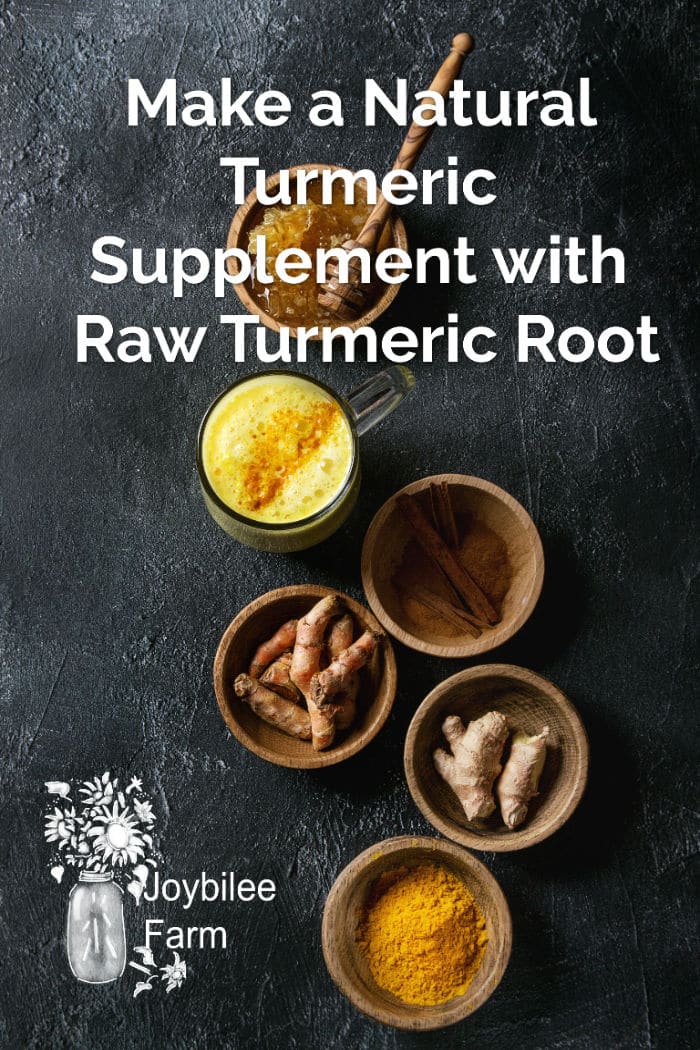
Note: I used 40% vodka for this recipe because that’s the highest percentage of alcohol available to me in BC. If you can find Everclear, which is 95% alcohol, that would be a better choice when making a tincture from fresh plant material. A tincture made with Everclear will last decades if kept in a cool, dark place. However, the 40% alcohol used here will preserve the root and draw out its medicinal qualities, just fine. Its shelf life will be 2 to 4 years, possibly longer. If you notice an off smell, colour, or taste after long storage toss it out. If you see any other signs of spoilage, discard the tincture. If using Everclear for this remedy remember to add additional distilled water before you bottle the tincture for use, to bring the alcohol percentage down to 50%. (See Scott’s comment below for more information on proper dilution of Everclear.)
Cap the jar tightly. Label and date the jar. I like to use a permanent marker and just write directly on the lid of the jar. It can be washed off with dish soap and water later.
Place the jar in a dark, cool spot. Shake daily, being careful not to spill the contents. The jar contents will stain skin, and clothing if it drips.
After 30 to 45 days, strain the contents through a cloth. Squeeze out in a potato ricer through the cloth to collect all of the liquid.
Bottle the tincture in dark glass bottles with a drop reducer or rubber dropper lid. Label and date – “Turmeric tincture”
Dosage recommended by Michael Moore: 10 to 30 drops 3 times a day. A dropper is 20 drops. It should be taken with fat to aid with absorption.
A tincture is easier to travel with than Golden Paste. For those who are less likely to go to the trouble of making golden milk as a turmeric supplement, fresh turmeric tincture can fill the gap.
Contraindications:
Do not use if you are pregnant in therapeutic doses. It is all right to use it as a spice if pregnant. It may have an anti-ovulary effect so should not be used by women hoping to conceive.
Do not use in medicinal doses if you have bile duct obstructions, are prone to kidney stones, or have gall stones. Do not use if you are taking prescription blood thinners without discussing it with your doctor. Those with congestive heart failure should talk to their doctors before taking turmeric in therapeutic doses.
Do not use if you are allergic to turmeric or other plants in the ginger family.
Learn more about using herbs for health and wellness from my Book
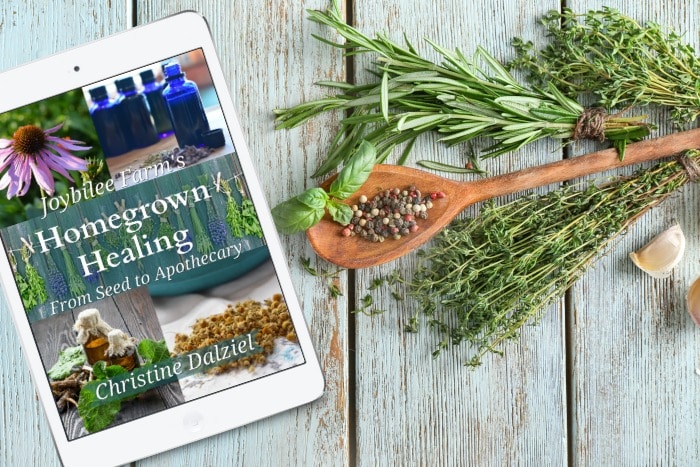
Homegrown Healing From Seed to Apothecary
My book Homegrown Healing From Seed to Apothecary will help you grow healing herbs in your own garden. Focusing on the easiest plants for beginners to grow, Homegrown Healing From Seed to Apothecary covers 30 plants, recommended by professional herbalists, that can be grown in the temperate zone. Initial garden preparation, garden design and harvesting tips lead the novice herbalist into early success. Choose which herbs to grow, learn how to use these herbs for your family’s health and wellness using the guidance in my book. You can find out more about this useful guide to growing more herbs and using them strategically here.
References:
Chairman K, Jayamala M, Christy VR, Singh RAJA(2015)Phytochemical Screening and Antimicrobial Activity of Curcuma longa Natural Dye. General Med 3: 171. doi: 10.4172/2327-5146.1000171
Chakravarty A.K, et als.”Comparison of Efficacy of Turmeric and Commercial Curcumin in Immunological Functions and Gene Regulation” International Journal of Pharmacology 06/2009; 5(6). DOI: 10.3923/ijp.2009.333.345
Krup V, Prakash LH, Harini A (2013) Pharmacological Activities of Turmeric (Curcuma longa linn): A Review. J Homeop Ayurv Med 2:133. doi: 10.4172/2167-1206.1000133
Vyas K (2015) The Cure is in the Roots: Turmeric. J Nutr Disorders Therapy 5: 163. doi: 10.4172/2161- 0509.


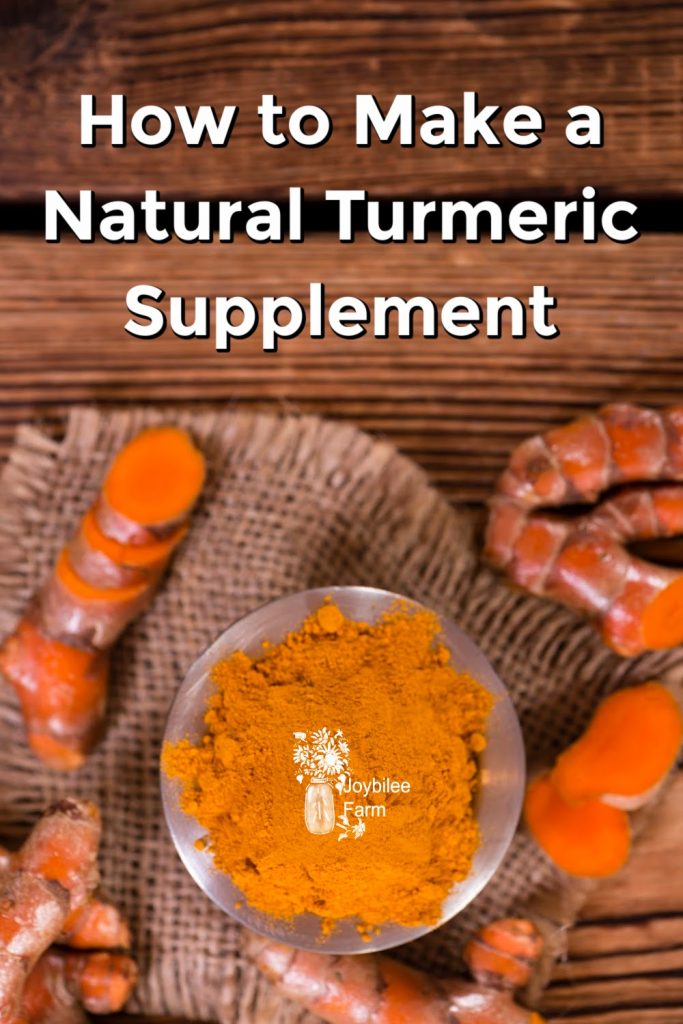
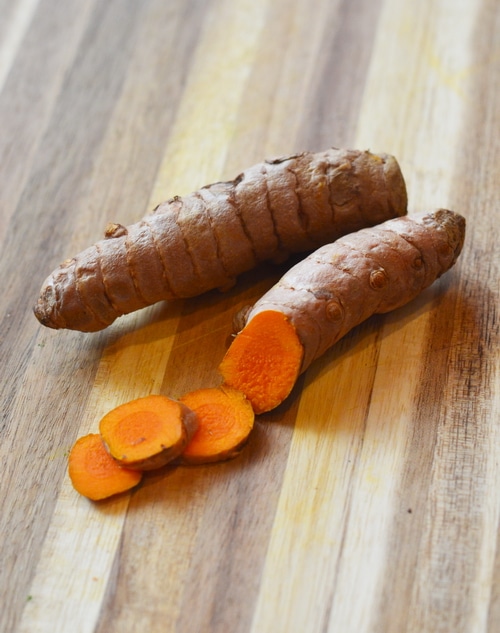
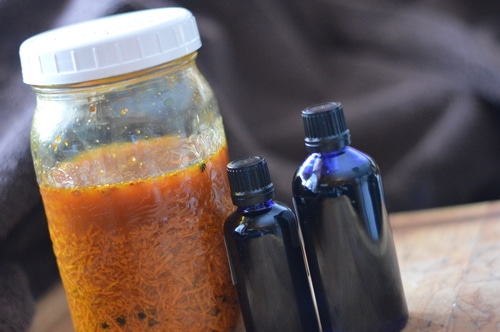
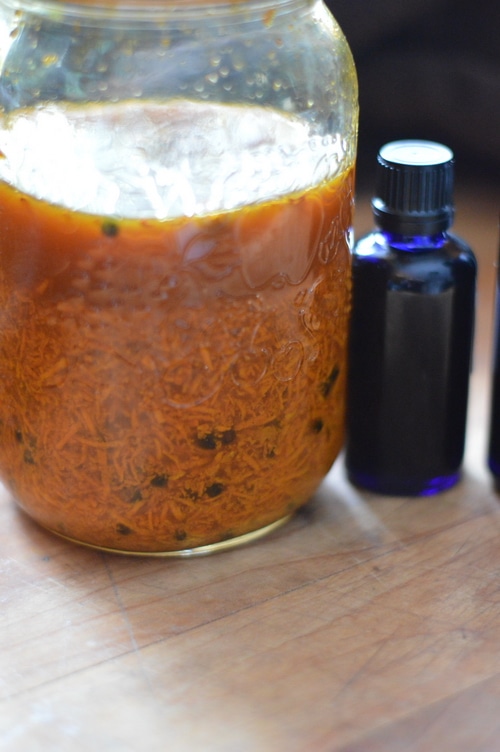


It will be fine. Tinctures have a long shelf life of years.
Hi there. I have made a tumeric tincture one year ago and have not yet strained out the pulp. Do you think it’s still okay to consume after straining?
I have been making this tincture ever since I first discovered your recipe for . I have made large batches twice. I keep ia small spray bottle in my car and use it before exercising. I use a bodhum for squeezing out the pulp. I use pulp for cooking curries and soup. Thanks for this great recipe.